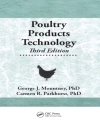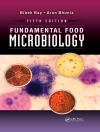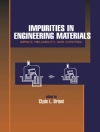This Brief explores the chemistry and production technology of a cheese precursor: the cow’s milk curd. It explains how different coagulation and treatment methods can be used to obtain various types of cheeses. Parameters such as the type of used milk, the coagulation method, p H value, color, and microbial fermentation have a profound impact on the resulting curd properties, and hence on the cheese.
The authors discuss some of the most important parameters, and how their modification can lead to a variety of cheese and dairy products. This Brief also addresses the question, if cheese makers can standardize their production procedures, and what role chemistry may play in that. Another important point addressed here are the sources of failures in the curd production, e.g. in packaging systems.
Readers will find selected examples of helpful analytical techniques for studying and evaluating curd quality, and for monitoring the chemical evolution of selectedchemical substances or protein aggregation.
Tabla de materias
Optimizing Lactic Acid Cheese Packaging Systems.- Evolutive Profiles of Caseins and Degraded Proteins in Industrial Cow’s Milk Curds.- The Production of Industrial Cow’s Milk Curds.- Chemical Correlations between Industrial Curds and Final Cheeses. Can Cheese Makers Standardize Productions?
Sobre el autor
Salvatore Parisi is a chemist and food scientist, working as a consultant for the food industry and as a lecturer in the academia. He obtained his MSc from the University of Palermo, and Ph D from the University of Messina, Italy. Dr. Parisi is also a Preventive Controls Qualified Individual (PCQI) after the successful completion of the FSPCA Preventive Controls for Human Food course in 2016 (according to new U.S. regulations). He serves as series editor for the Springer Briefs in Molecular Science: Chemistry of Foods. Dr. Parisi is an associate of the Sicilian Order of Research Chemists, Italy, and many other international Associations, including the EFSA’s Expert Database, Parma, Italy, and the FAO Food Safety Expert Roster, FAO, Rome, Italy. In addition, Dr. Parisi is a member of the AOAC Official Methods of Analysis SM (OMA) Expert Review Panel (ERP) for Fertilizers. He is a member of the Editorial Board of different scientific journals. He has an important scientific contribution (with more than 120 articles, books and software) in the fields of Packaging Technology, Polymer Chemistry, Shelf Life Prediction and Food Microbiology (Italian Oxoid Award, 2001).
Caterina Barone is an experienced author in the field of food science and quality audits. She is an ISO 9001-auditor in different sectors, including also professional training services. Her recent works are focused on food packaging hygiene, chemical and technological features of cheeses and other prepared foods, dedicated BASIC software, and microbial toxins in different foods for human consumption. In addition, Caterina has studied the evolution of public safety and hygiene in the European Union with relation to foods and beverages by means of the RASFF system. At present, she is also vice president of the Association ‘Componiamo il Futuro’ (CO.I.F.) in Palermo, Italy, working in the field of professional training.
Marcella Barbera is a research chemist, working in collaboration with the DEMETRA Department of the University of Palermo, Italy. She has also worked with private laboratories, with a major focus in analytical methods on different food matrices. In particular, topics of her recent research comprise the study of biogenic amines and the selection of amine-degrading non-starter lactic acid bacteria in Sicilian cheeses. Her published works include ‘A survey of the main technology, biochemical and microbiological features influencing the concentration of biogenic amines of twenty Apulian and Sicilian (Southern Italy) cheeses’ (2015) and ‘Selection of ‘amine-degrading’ non-starter lactic acid bacteria from Sicilian cheeses’ (2014).
Michele Barone is an experienced photographer and consultant, working in the field of food science and technology and also in restoration chemistry. Some of his works have been published in international books (Smithers Rapra Technologies, Ltd, Springer) with a main focus on food packaging and correlated failures, and selected food products with a dedicated tradition (Mediterranean Diet). More recently, he has also written about food traceability systems in the field of European cheese products. At present, Michele works at the Association ‘Componiamo il Futuro’ (CO.I.F.) in Palermo, Italy (sector: professional training).
Professor Izabela Steinka is specialised in microbiology and food hygiene. She is a professor at the Maritime University in Gdynia, and she is particularly interested in microbiological interactions. The topics of her recent research comprise health promotion and biological aspects of packaging, which are related to her didactic work at the Medical University in Gdansk and College of Health and Beauty in Gdynia. Her published works include ‘Hygiene in Commerce and Service Sector’ (2007), ‘Prognostics of Microbiological Interactions” (2007), ‘Lactic Acid Cheese Safety’ (2008), and ‘Microbiology of Food and Industrial Materials’ (2011).












